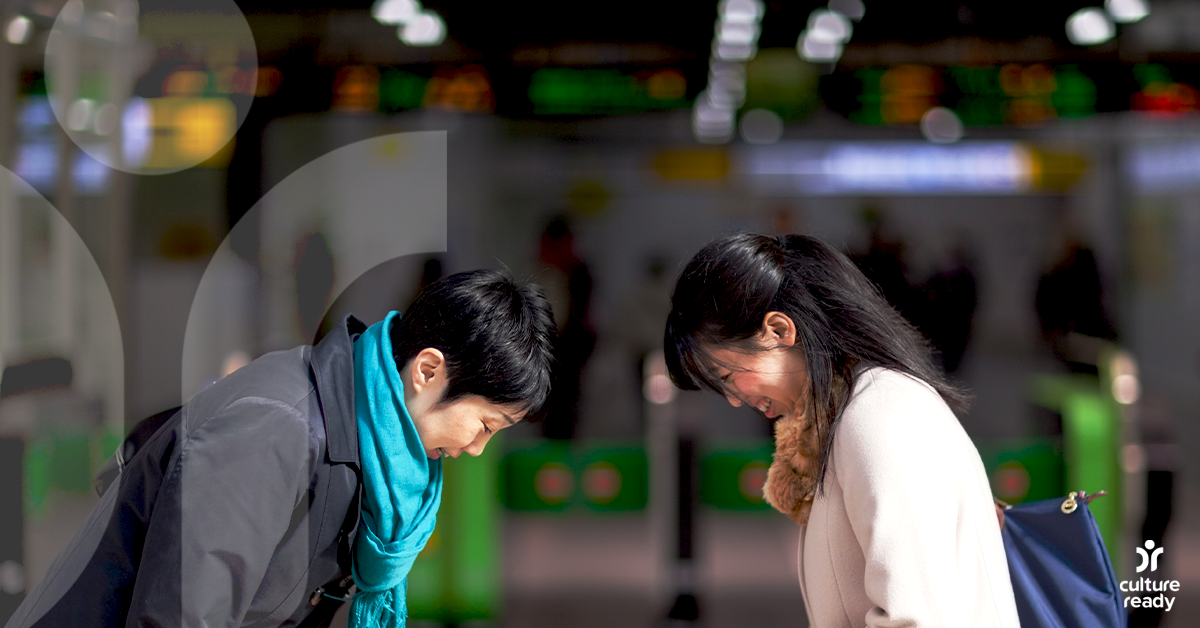Don't Eat in Public, and Other Rules of Social Etiquette in Japan
No matter where you go in the world, you’re likely to be tripped up by social etiquette: how to use chopsticks, whether or not to smile, if small talk is common or if people get right to the point. Japan is well known for their rules of social etiquette, and here we highlight some things to keep in mind for your visit to Japan.
Bowing: This is one of the most important social conventions because it is a sign of respect that you will encounter it with every interaction. When you say hello, goodbye, thank you, or sorry, Japanese are expected to bow. As a tourist, it may not be expected of you, but it will not go unappreciated.
Shoes: Expect to take your shoes off whenever you enter a home, guesthouse, temple, and even some restaurants. If you are afraid you might forget, it will be hard to miss the shoes that others have taken off at the entrance, and the signs in public venues reminding visitors to take off shoes. Part of this is due to cleanliness, as shoes can track in dirt and germs from the outside world, but—like most other conventions—it is a sign of respect as well. The deeper the bow, the greater the respect shown.
Riding trains: Here in the U.S., riding trains, especially as public transit in cities, is always an interesting experience. You might encounter buskers or breakdancers, people often eat and drink their morning coffee (even if rules clearly state no food or drink), and loud conversations aren’t out of the question either. But in Japan, trains are quiet places where eating and drinking are considered rude. Keep your phone on silent and definitely don’t have any phone conversations either. If you want to listen to music, make sure you have headphones on hand. And while in the U.S. passenger might push their way ahead of others to be the first to get seats or a good place to stand, passengers in Japan are expected to line up at designated areas on the platform.
Public Bathing: Public bathing houses (sentos) are popular in Japan, many of them on hot volcanic springs (or onsens). They are less for washing and more for contemplation. If you are interested in checking one of these out, there are some social norms to know. For one, tattoos are still considered taboo in Japan, and while some bathhouses might allow visible tattoos on tourists, it’s generally expected that you will have to cover up all tattoos to be allowed into a bathhouse. You will also need to shower before entering the onsen, to help keep the water pure and clean. Bathing suits are also not usually worn in bathhouses, unless it is mixed-gender; instead, you will be provided with a towel to wear.
Eating: As we’ve highlighted on the blog before, there are a number of things to keep in mind when using chopsticks in Japan. But there are more rules of etiquette for eating than just how to use chopsticks. Just like eating on trains is looked down on, eating in public—especially while walking—is also frowned upon. There are also certain terms often used at the beginning and end of a meal: “Itadakimasu,” which means “I humbly receive,” is said before eating, and afterwards diners often say, “Gochiso sama deshita,” or “thank you for the meal.” Also keep in mind that while dining out, tipping is not expected or even encouraged.
What to wear: While Western culture may have popularized the quirky fashion styles of Harajuku, for the most part Japanese dress tends to lean more conservative. While it might be common in the U.S. to wear crop tops and short shorts, aim to show less skin in Japan out of respect for their social expectations. Try to avoid wearing clothes with holes in them, especially if you plan to visit any temples or other sacred spaces. As mentioned before, tattoos are generally frowned upon, so if possible, wear clothes that cover visible tattoos. And because you’ll be required to take off your shoes in many different public and private spaces, opt for slip-on shoes instead of laced sneakers— it will make your visit much easier overall.
Learn more
